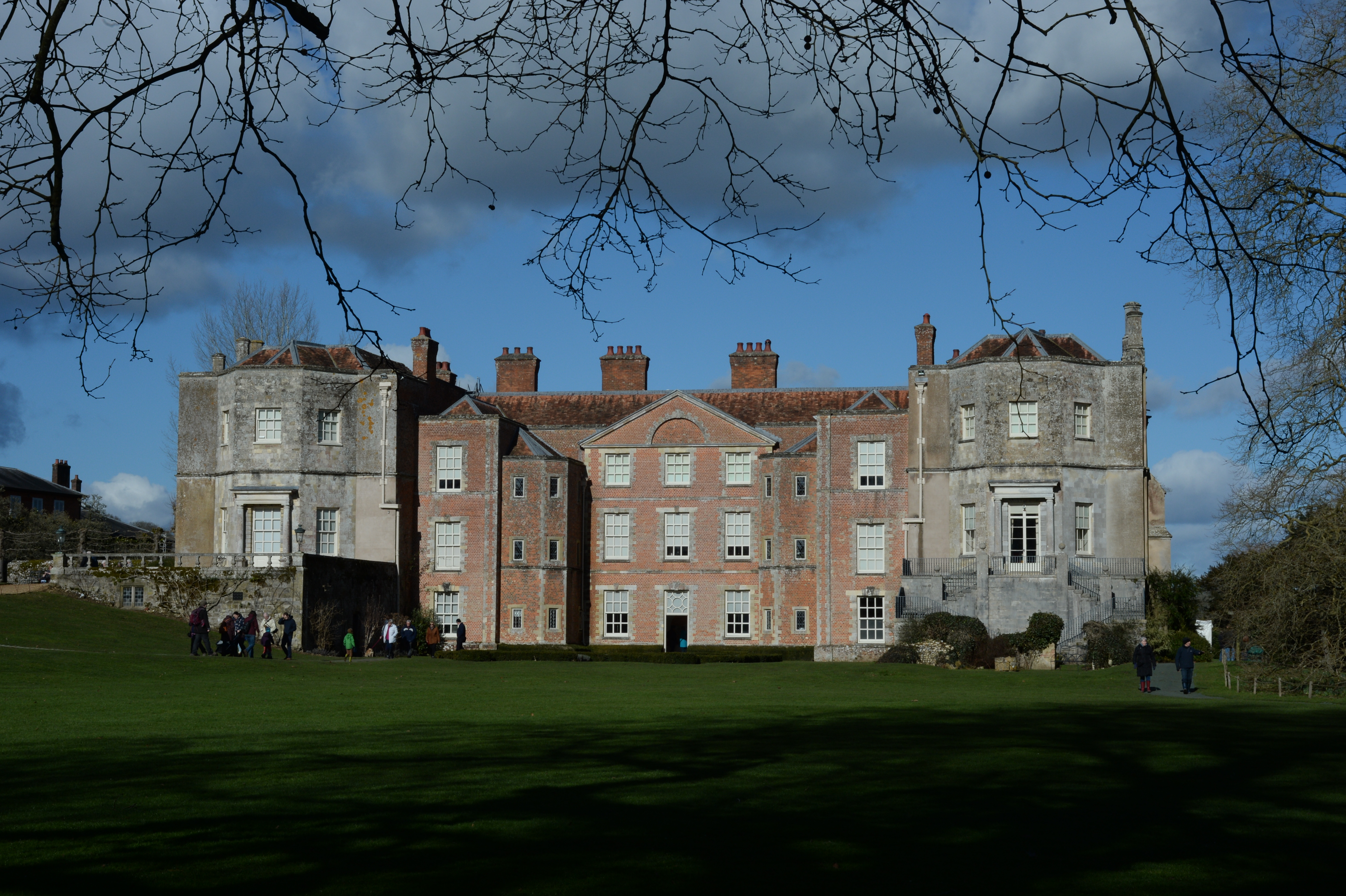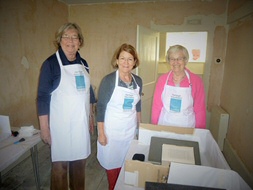Mottisfont Abbey
The Arts Society Romsey volunteers have been working at Mottisfont Abbey since April 2013. The first project was to assess and inventory mark all items within their collection as part of Museum Accreditation standards. 1666 items were marked including furniture, stoneware, metalware, silverware, textiles and ceramics. Mottisfont became an accredited museum in 2015.

A second project started in March 2016 and is now complete. Having acquired a book collection which had belonged to Maud Russell, volunteers were recruited to clean, assess, catalogue and photograph as described below. We anticipate at least a further 6 months work. We received the following letter from the Conservation Assistant who is overseeing the project at this National Trust property. Currently 7 volunteers work in twos or threes once a week.

“Please could you kindly pass on our thanks from everyone at Mottisfont to the whole book team for all their hard work over the past 9 months. We’re progressing really well, we’re about three quarters of the way through condition assessing the Russell book collection, including Bryce’s painstaking work to upload all this data on to our inventory spreadsheet. The next phase is to start to photograph all of the inscriptions and clippings inside the books. Hopefully everyone will enjoy being able to stop and take a longer look at the contents of the books at this point, instead of just focusing on all the dust and foxing!
I know that you have all had a lot going on this year, so we are really grateful for all the time and expertise you all bring to the project.
Thank you”
A third very exciting and interesting project, started in the summer of 2017, involves sorting and cataloguing boxes of photographs of Maud Russell, her friends and family (some very well known) and of Mottisfont. These photographs and clippings tell an interesting and fascinating story of the family and of Mottisfont.
This conservation programme is very necessary and the help from our Volunteers has been invaluable. They have sorted, categorised and prepared the photographs, carefully wrapped in acid-free tissue and stored in conservation boxes ready for the conservation experts, all of course under the supervision of an NT staff member who is trained in this task.
King John’s House, Romsey
King John’s House and Heritage Centre in Romsey offers a fascinating glimpse of over 750 years’ of history, thanks to its three houses, garden and collection of artefacts.
Located in Church Street, one of the town’s most famous thoroughfares, it is reached through the passageway between the Tourist Information Office and the Post Office. Links with the community are strengthened by regular talks, exhibitions, craft events and lifestyle reenactments for schools.
In May, Arts Council England declared the complex to be a fully accredited museum. The accreditation process helps guide museums to be the best they can be, for current and future users.

One key part of the accreditation process involves organising the collections – a lengthy, and potentially expensive task. Two years ago, Sue Mullane, the Romsey DFAS Heritage Representative approached Collections Manager Barbara Burbridge offering assistance. The relationship started well and went from there to a group of nine Heritage Volunteers from the Society who have played a crucial role by helping out six times a month, for two hours at a time.
“Whether it’s an old wooden clog worn at the brewery or an exquisitely hand-worked piece of lace, learning about the surprising variety of artefacts we sort through at King John’s House gives you a real sense of connection with the life of ordinary and extraordinary people who lived in Romsey in the past,” commented Jane, one of the volunteer team. Barbara was in touch with Sue as soon as the successful accreditation outcome was known.
She wrote of the team: “I couldn’t have got the collection to the stage we have reached without their enthusiasm and support, and I really appreciate every type of input – from you managing the rotas to Stephen painstakingly scraping the old labels off the glass-fronted drawers, plus Ginny carting off items to treat for woodworm! The core work of tracing items, writing inventories and entering items onto the computer spreadsheet helped me to know the stored material well enough to get through the assessment day without a hitch. My thanks to all. Every member of the team has become a friend, and that is a much valued bonus.”
Work continues at King John’s House, with no end date in sight at present. Several of team have been learning new skills, such as the correct way to wrap garments in acidfree tissue.
Kate, one of the Heritage Volunteers, said: “I’ve enjoyed working at King John’s House because you get a chance to learn so much about local history. Barbara is a mine of fascinating information and it’s so worthwhile to be helping to preserve local documents and artefacts for the next generation.”
Digitithe Hampshire
The Hampshire Record Office holds all the Hampshire Tithe maps from 1840 at its offices in Winchester. They have been digitally scanned and are viewable on-line. A project, Digitithe Hampshire, is underway to transcribe the information on these maps to make them usable so they can be digitally seached or compared to modern maps.
Winchester and Test Valley DFAS societies already have a team in place and in 2016, four Romsey DFAS volunteers joined the team.
Volunteers work from their own home with a CD containing a tithe map from a particular parish .


